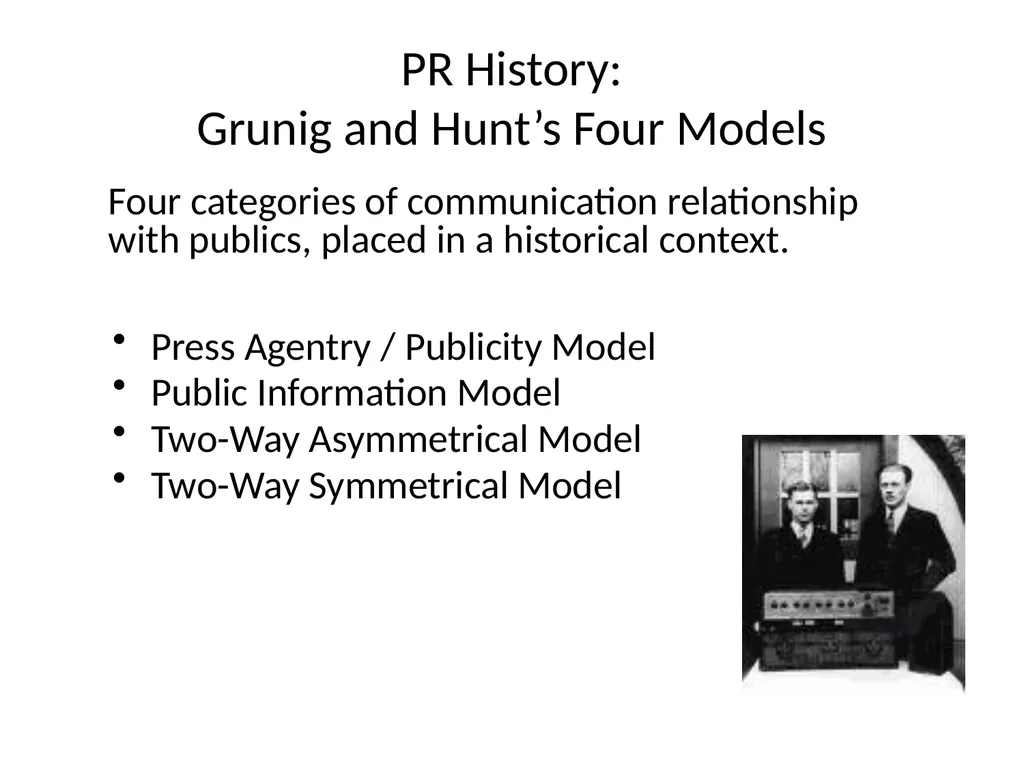
Author : trish-goza | Published Date : 2025-05-29
Description: PR History: Grunig and Hunts Four Models Four categories of communication relationship with publics, placed in a historical context. Press Agentry Publicity Model Public Information Model Two-Way Asymmetrical Model Two-Way SymmetricalDownload Presentation The PPT/PDF document "" is the property of its rightful owner. Permission is granted to download and print the materials on this website for personal, non-commercial use only, and to display it on your personal computer provided you do not modify the materials and that you retain all copyright notices contained in the materials. By downloading content from our website, you accept the terms of this agreement.
Here is the link to download the presentation.
"PR History: Grunig and Hunt’s Four Models Four"The content belongs to its owner. You may download and print it for personal use, without modification, and keep all copyright notices. By downloading, you agree to these terms.













